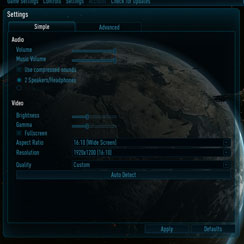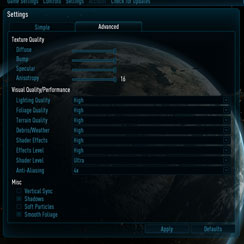Enemy Territory: Quake Wars
Publisher: ActivisionBuilt on an updated version of id Software's Doom 3 engine, Enemy Territory: Quake Wars is a team-based first person shooter that recently obtained the title of being the first game to use John Carmack's megatexture technology: a single texture that spans the entire map.
ET:QW also makes use of many vehicles and large open areas which means the action in view can get really intensive in this team based shooter. It's also the only game in this suite that utilises OpenGL instead of the pretty much industry-standard DirectX API. We used the full retail version of the game patched to version 1.1.
We recorded a timenetdemo that lasts for several minutes during an online game - this used lots of the different graphical effects to create what we've deemed to be a fairly typical slice of action to stress the system. We also created a custom autoexec file that enabled ultra high video settings, over and above that of the standard in game "high".
However, because of some display corruption on the ATI graphics cards, we had to disable soft particles on all cards to give a fair apples-to-apples comparison. It’s worth bearing in mind that you’ll be able to turn this effect on with GeForce 8-series hardware.
In Quake Wars, there are two different stories to tell because, depending on the anti-aliasing settings, there are two quite different performance characteristics to take in. The first is a disappointing one, if we’re honest, because the factory overclocked Asus EAH3870 TOP is quite a bit slower than the similarly-priced Nvidia GeForce 8800 GT when 4xAA is applied.
It’s as if Nvidia has been hard at work optimising its performance with 4xAA and the trend isn’t helped by the fact that RV670 doesn’t feature a hardware-based MSAA resolve unit, which means the final resolve stage of the anti-aliasing process has to be handled by the shader. Of course, this gives much tighter control over the quality of the pixel sub samples, as you move from fixed function to floating point calculations for the resolve stage.
What’s interesting is that when you move to 8xAA, things change quite drastically and the Asus EAH3870 TOP actually manages to outperform most cards. This is because Nvidia’s G92-based products appear to suffer under the heavy workload because of the 256-bit memory interface – RV670’s ring bus memory controller is likely to be the reason for this. At the same time, Nvidia products with larger memory bus widths (and sufficient framebuffer sizes) show more respectable performance in comparison to the otherwise faster G92-based products.

MSI MPG Velox 100R Chassis Review
October 14 2021 | 15:04












Want to comment? Please log in.